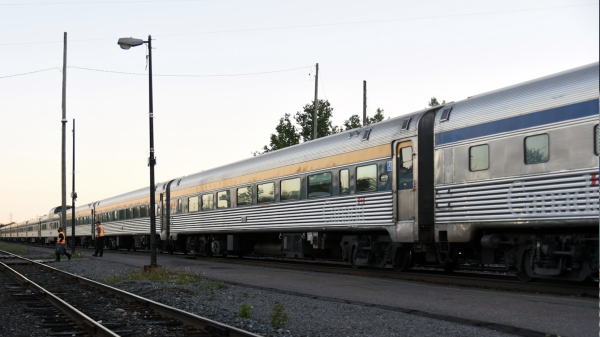If you could look into a crystal ball to see into the future, what questions would you want answered relative to how people get from A to B in Northern Ontario?
Would you ask what makes for an efficient, affordable and well-utilized transportation system that meets the needs of ordinary travelers? How about finding out where Northerners want to get to, and why some take transit, while others prefer driving to their destination?
This is the kind of valuable feedback decision makers should be looking for in order to maximize the value of every taxpayer dollar spent on passenger rail.
Instead, government-funded corporations like VIA Rail Canada produce podcasts as a substitute to having genuine discourse with customers and stakeholders.
The company’s most recent annual public meeting can be summarized as a one-sided discussion.
Sure, VIA Rail went through the motions of providing Canadians an opportunity to submit questions online … for four days in July.
But the corporate communications department likely chose which topics would be addressed during this pre-recorded audio program, featuring prominent members of VIA Rail’s executive and board of directors.
Spoiler: No more than four and a half minutes was spent responding to written inquiries from the public. I’m surprised Thunder Bay was even mentioned.
VIA Rail’s leadership talked a great deal about providing Canadians with the best service possible, while also explaining the Crown Corporation’s plan to replace its pan-Canadian fleet within ten years — approximately 320 coaches and 42 locomotives that connect rural and remote communities.
However the chairperson’s claim that “Passengers come first for us” flies in the face of what’s happening trackside in Northern Ontario.
Over the past decade, concerned citizens have consistently brought to VIA Rail’s attention a number of critical issues that make accessing their trains difficult. They include:
- Delays that exceed many hours
- Boarded up terminal and layover stations
- Geriatric train sets
- Mechanical failures that cause last-minute cancellations
- No connections with regional transit providers
- Service reductions without public consultation in the 2010s
- Communities that are bypassed entirely
When was the last time anyone from upper management actually here to experience the service they claim will “make passenger rail transport the preferred means for travelling and staying connected in Canada”?
Politicians keep playing a game of hot potato, insisting that “VIA Rail is an independent Crown corporation that operates at arm’s length from the Government of Canada”, and that Parliament’s role is “to determine the broad policy objectives associated with passenger rail”, not operations issues or overall service provision.
VIA Rail says it’s “constantly looking for solutions to improve the passenger experience, carefully considering factors like cost, ridership and the needs of the communities” they serve. Yet the mere suggestion of reopening stations, extending an existing rail service along the north shore of Lake Superior or adjusting train schedules appear to be off the table.
Some things are understandably outside of VIA Rail’s control (e.g. decisions tied to capital investments, operating funding increases, and which trains have priority on third-party tracks).
But if neither the government nor the company wants to have open, constructive discussions about ongoing challenges in the region, then what purpose do these annual public meetings serve?
It doesn’t take a fortuneteller to recognize that the status quo — impractical, infrequent and unreliable rail service — doesn’t meet the needs of those who depend on public transportation.
Northern Ontario remains extremely isolated.
There’s exactly one almost-daily bus operating along 1 700 kilometres of the Trans-Canada highway between Sudbury and Winnipeg.
In the event of treacherous weather or a collision, there are zero detours within Canada along stretches of road between Nipigon and Thunder Bay, as well as from Kenora to the Ontario/Manitoba border.
Commercial flights in the North have also disappeared, or are about to be cut for economic reasons.
If the Mark Carney government is serious about accelerating “nation-building projects that connect our regions”, some real conversations need to be had between his new Minister of Transport, Steven MacKinnon — the sixth in the last four years, VIA Rail and the travelling public.
The solution to improving domestic travel between communities big and small, here in Northern Ontario, just might be under their noses.
Éric Boutilier is a columnist for Northern Tracks, a self-published blog related to intercity transportation in Northern Ontario.
- Ladies Curling Standings – December 12th - December 12, 2025
- Municipality of Wawa Partners with SECFDC to Administer Municipal Accommodation Funds - December 10, 2025
- New Chair and Vice Chair for the Algoma District School Board - December 10, 2025
 Wawa-news.com You can't hear the 'big picture'!
Wawa-news.com You can't hear the 'big picture'!

